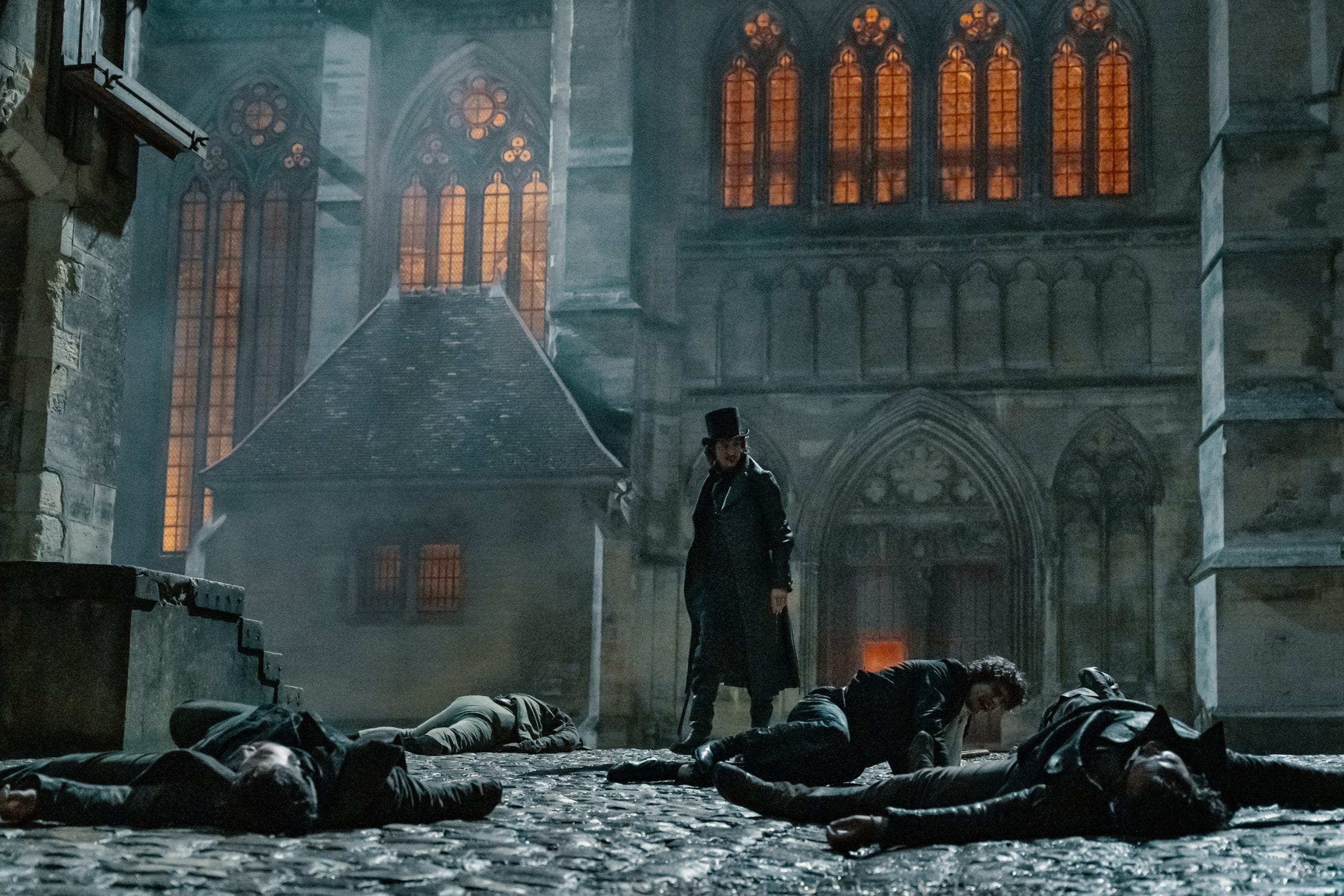Exploring Themes Of Revenge And Justice In The Count Of Monte Cristo

Table of Contents
Edmond Dantès's Journey: From Innocence to Vengeance
Edmond Dantès begins The Count of Monte Cristo as an innocent young sailor, on the cusp of happiness and marriage to his beloved Mercedes. His life is idyllic, but this tranquility is shattered by a web of deceit and betrayal orchestrated by Fernand Mondego, Danglars, and Villefort. These jealous rivals, driven by ambition and malice, falsely accuse Edmond of treason, leading to his wrongful imprisonment in the infamous Chateau d'If.
- Betrayal by Fernand, Danglars, and Villefort: The cruel irony of Edmond’s situation is central to understanding the themes of revenge and justice in the novel. His friends become his tormentors, their envy and ambition fueled by their own insecurities and greed.
- The Harsh Conditions of Imprisonment: Years of brutal confinement in the Chateau d'If break Edmond physically and mentally, yet simultaneously forge his transformation. The unjust nature of his imprisonment fuels the fire of his vengeful quest.
- Transformation from Sailor to Mastermind: Imprisonment doesn't simply break Edmond; it refines him. He learns from fellow inmate Abbé Faria, gaining knowledge, skills, and a burning desire for retribution. This transformation from a naive sailor to the cunning and resourceful Count of Monte Cristo is a key element in understanding his pursuit of revenge.
- Acquisition of Fortune and Persona: Abbé Faria's tutelage is not just intellectual; he also reveals the location of immense treasure on Monte Cristo. This newfound wealth and the carefully constructed persona of the Count allow Edmond to orchestrate his elaborate plan of revenge. The acquisition of this wealth transforms him from a victim to a powerful player capable of enacting his justice.
The Nature of Revenge in the Novel
Edmond Dantès’s revenge is meticulously planned and executed, a calculated dismantling of the lives of those who wronged him. It's not a simple act of violence; it's a complex strategy involving financial ruin, public humiliation, and psychological torment.
- Financial Ruin of Danglars: Danglars's insatiable greed is met with calculated financial ruin, stripping him of his wealth and leaving him destitute. This aspect of Edmond's revenge highlights the devastating consequences of avarice.
- Public Humiliation of Fernand Mondego: Fernand's ambition and betrayal are met with public disgrace and the unraveling of his carefully built reputation. His social downfall is a key element of Edmond’s retribution.
- Unraveling of Villefort's Life: Villefort's hypocrisy and corruption are exposed, leading to the collapse of his career and family. This highlights the novel's exploration of justice within the corrupt judicial system itself.
- Psychological Torment: Edmond's revenge isn't just about material destruction; it involves the psychological torment of his enemies. He forces them to confront the consequences of their actions, creating a profound sense of dread and uncertainty.
- Moral Ambiguities: The question of whether Edmond's actions constitute justice or cruel vengeance is central to the novel. His methods are undeniably ruthless, forcing the reader to grapple with the morality of revenge.
The Question of Justice: Is Revenge Ever Justified?
The Count of Monte Cristo doesn’t offer easy answers about justice. The novel highlights the failings of the legal system, showcasing its susceptibility to corruption and the potential for injustice.
- Flawed Legal System: Edmond's wrongful imprisonment exposes the deep flaws and inherent biases of the legal system. The novel shows that the system designed to uphold justice can become an instrument of oppression.
- Hypocrisy and Corruption: The novel depicts the hypocrisy and corruption of those in power, including judges and officials, who prioritize self-preservation over true justice. This demonstrates the novel's engagement with systemic issues.
- Self-Administered Justice: Edmond takes justice into his own hands, acting as both judge and executioner. This raises the critical question of whether vigilante justice can ever be truly just, even when the initial injustice is undeniable.
- Legal Justice vs. Personal Retribution: The novel explores the conflict between the formal processes of the legal system and the personal drive for retribution. This opposition underscores the novel's central theme.
- Moral Justification: Even considering the initial injustice, the question of whether Edmond’s brutal methods are morally justifiable remains a complex and compelling aspect of the narrative. His actions raise questions about proportionality and the limits of revenge.
The Role of Mercy and Forgiveness
Despite his relentless pursuit of revenge, Edmond occasionally displays mercy and forgiveness, adding layers of complexity to his character.
- Edmond's Treatment of Haydée: Haydée, a victim of slavery, becomes a symbol of hope and compassion for Edmond. His kindness towards her highlights the contrast between his actions against his enemies and his capacity for empathy.
- Relationship with Mercedes: His relationship with Mercedes showcases his capacity for both love and vengeance. Ultimately, his compassion shines through, even though his heart is burdened by betrayal.
- Sparing Certain Individuals: Edmond chooses to spare some individuals, demonstrating that his revenge is not indiscriminate or driven by a simple lust for blood.
- Contrast between Revenge and Compassion: The novel effectively contrasts Edmond’s ruthless pursuit of revenge with moments of genuine compassion, which adds depth and moral complexity to his character.
The Enduring Legacy of The Count of Monte Cristo
The Count of Monte Cristo remains incredibly popular, a testament to its enduring themes and compelling narrative. Its exploration of revenge, justice, and redemption continues to resonate with audiences worldwide.
- Enduring Popularity and Adaptations: The novel's enduring popularity is demonstrated by its numerous adaptations across various media, from film and television to stage productions.
- Timeless Themes: Themes of revenge, justice, and redemption are timeless, making the story perpetually relevant to readers and viewers across generations.
- Exploration of Power, Betrayal, and Human Condition: The novel’s exploration of power dynamics, betrayal, and the complexities of the human condition gives it a universality that transcends time and culture.
Conclusion
The Count of Monte Cristo is more than just an adventure story; it is a profound exploration of the complexities of revenge and justice. Edmond Dantès's journey forces readers to confront difficult questions about morality, the law, and the human capacity for both good and evil. The novel's enduring appeal lies in its nuanced exploration of these timeless themes and the moral ambiguities at the heart of its thrilling plot. Have you considered the moral ambiguities of revenge in The Count of Monte Cristo? Share your thoughts on the themes of revenge and justice in the comments below! Let's further explore the nuanced portrayal of revenge and justice in this literary masterpiece.

Featured Posts
-
 Ufc Fighter Suspended Six Months Following Anti Doping Rule Breach
May 04, 2025
Ufc Fighter Suspended Six Months Following Anti Doping Rule Breach
May 04, 2025 -
 Bof A Reassures Investors Why Current Stock Market Valuations Are Not A Threat
May 04, 2025
Bof A Reassures Investors Why Current Stock Market Valuations Are Not A Threat
May 04, 2025 -
 Scotlands Coastal Revival Investing In Seagrass Planting For Ecosystem Restoration
May 04, 2025
Scotlands Coastal Revival Investing In Seagrass Planting For Ecosystem Restoration
May 04, 2025 -
 Marvels Quality Control Addressing Criticisms Of Recent Films And Series
May 04, 2025
Marvels Quality Control Addressing Criticisms Of Recent Films And Series
May 04, 2025 -
 Greg Olsens Third Emmy Nod A Win Against Tom Brady
May 04, 2025
Greg Olsens Third Emmy Nod A Win Against Tom Brady
May 04, 2025
Latest Posts
-
 Verstappens New Arrival Balancing Fatherhood And Racing
May 04, 2025
Verstappens New Arrival Balancing Fatherhood And Racing
May 04, 2025 -
 Miami Gp Verstappens Family News
May 04, 2025
Miami Gp Verstappens Family News
May 04, 2025 -
 Max Verstappen New Baby Miami Gp Focus
May 04, 2025
Max Verstappen New Baby Miami Gp Focus
May 04, 2025 -
 Formula 1 Max Verstappen Becomes A Father
May 04, 2025
Formula 1 Max Verstappen Becomes A Father
May 04, 2025 -
 Verstappens Baby News First Child Born Ahead Of Miami Gp
May 04, 2025
Verstappens Baby News First Child Born Ahead Of Miami Gp
May 04, 2025
